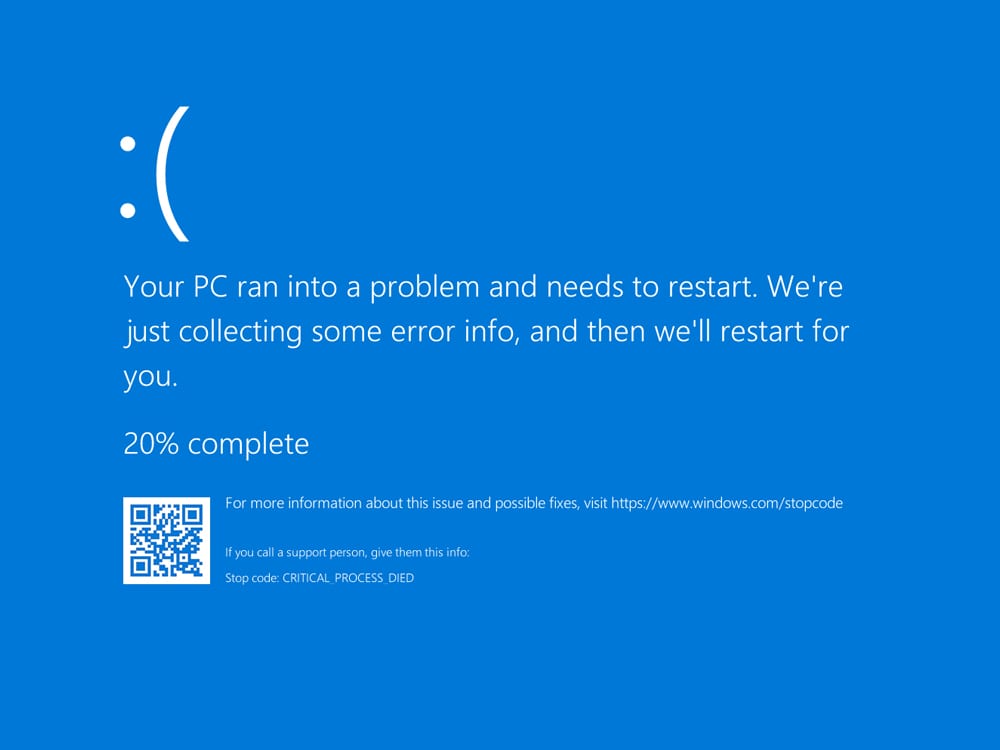Decoding the Blue Screen of Death: A Comprehensive Guide to Understanding and Resolving PC BSOD Issues

Introduction: The Blue Screen of Death (BSOD) is a notorious and anxiety-inducing phenomenon for PC users, signaling a critical system error that requires attention. This comprehensive guide aims to demystify the Blue Screen problem, shedding light on its causes, diagnostic tools, and effective solutions. Whether you’re a seasoned IT professional or a casual user, understanding the intricacies of the BSOD is crucial for maintaining a stable and reliable computing experience.
Section 1: Introduction to the Blue Screen of Death 1.1 Definition: Explore what the Blue Screen of Death (BSOD) is and understand its significance as a system error message. 1.2 Common Nicknames: Familiarize yourself with the various nicknames users have coined for the BSOD, such as “Blue Screen,” “Stop Error,” or “Screen of Death.”
Section 2: Causes of the Blue Screen Problem 2.1 Hardware Issues: Delve into how hardware malfunctions, such as failing RAM, overheating components, or faulty hardware drivers, can trigger a BSOD. 2.2 Driver Incompatibility: Understand the impact of incompatible or outdated device drivers on system stability, leading to the infamous Blue Screen. 2.3 Software Conflicts: Explore how conflicts between installed software or corrupt system files can result in a BSOD. 2.4 Malware and Viruses: Recognize the role of malware and viruses in compromising system integrity and potentially causing a Blue Screen. 2.5 Overclocking: Understand the risks associated with overclocking, which may destabilize system components and contribute to BSOD occurrences.
Section 3: Analyzing the Blue Screen Error Message 3.1 The STOP Code: Decipher the STOP code displayed on the Blue Screen, a hexadecimal identifier that provides insights into the nature of the error. 3.2 Error Description: Understand the accompanying error description or message, offering additional details about the specific issue that triggered the BSOD.
Section 4: Blue Screen Diagnostic Tools 4.1 Windows Memory Diagnostic: Learn how to use the built-in Windows Memory Diagnostic tool to test and identify potential issues with your computer’s RAM. 4.2 System File Checker (SFC): Explore the System File Checker utility to scan and repair corrupted system files that may be causing the Blue Screen. 4.3 Event Viewer: Utilize the Windows Event Viewer to examine detailed system logs and pinpoint events leading up to the BSOD. 4.4 Reliability Monitor: Navigate the Reliability Monitor to track system stability over time and identify patterns associated with Blue Screen occurrences.
Section 5: Common Blue Screen Errors and Their Solutions 5.1 IRQL_NOT_LESS_OR_EQUAL: Investigate the causes and solutions for the IRQL_NOT_LESS_OR_EQUAL error, often related to faulty drivers or incompatible hardware. 5.2 PAGE_FAULT_IN_NONPAGED_AREA: Understand the PAGE_FAULT_IN_NONPAGED_AREA error, commonly associated with faulty RAM or disk-related issues. 5.3 DRIVER_POWER_STATE_FAILURE: Address the DRIVER_POWER_STATE_FAILURE error, typically linked to power management issues or problematic drivers. 5.4 BAD_POOL_HEADER: Explore the BAD_POOL_HEADER error, often caused by faulty memory or driver conflicts. 5.5 KERNEL_SECURITY_CHECK_FAILURE: Analyze the KERNEL_SECURITY_CHECK_FAILURE error, related to potential hardware or driver issues.
Section 6: Preventive Measures 6.1 Regular Updates: Emphasize the importance of keeping your operating system, drivers, and software up to date to patch vulnerabilities and enhance system stability. 6.2 Driver Management: Adopt good driver management practices, including regular updates and careful selection of compatible drivers. 6.3 System Restore: Learn how to create and use System Restore points to revert your system to a stable state in case of unexpected issues.
Section 7: Advanced Troubleshooting 7.1 Safe Mode: Boot your computer into Safe Mode to troubleshoot and identify whether third-party applications or drivers are causing the Blue Screen. 7.2 Last Known Good Configuration: Explore the Last Known Good Configuration option to revert your system settings to a previous state that worked without issues. 7.3 Clean Boot: Perform a clean boot to start your system with a minimal set of drivers and startup programs, helping identify the source of the problem.
Section 8: Seeking Professional Help 8.1 Technical Support: Consider reaching out to the manufacturer’s technical support or a certified technician for expert assistance in diagnosing and resolving hardware-related issues. 8.2 Professional IT Services: Engage professional IT services to conduct in-depth diagnostics and address complex software or hardware problems leading to recurring Blue Screens.
Section 9: Reinstalling the Operating System 9.1 Backup Data: Prioritize data backup before considering a complete operating system reinstallation to avoid data loss. 9.2 Fresh Installation: Explore the steps involved in performing a fresh installation of your operating system to address persistent Blue Screen issues.
Conclusion: The Blue Screen of Death may be a formidable adversary, but armed with knowledge and the right tools, users can navigate through the complexities and effectively address the underlying issues. By understanding the causes, utilizing diagnostic tools, and implementing preventive measures, you empower yourself to maintain a stable and resilient computing environment. Remember, resolving Blue Screen problems often involves a systematic and patient approach, ensuring a smoother and more reliable computing experience in the long run.




